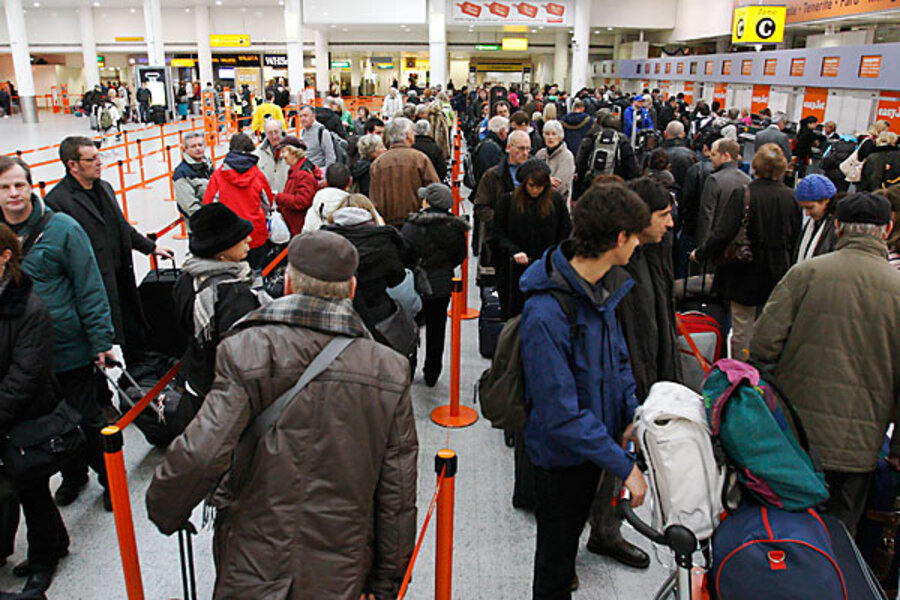Detroit attack: terrorist once again confounds airport security
Loading...
The failed attempt to blow up a US airliner over Detroit on Christmas Day shows how terrorists are adapting in their attempts to evade upgraded airport security.
Umar Farouk Abdulmutallab was charged Saturday with trying to blow up Northwest Flight 253. The way he allegedly tried to blow up the plane confounded not only airport security, but also authorities. One high-ranking law enforcement official told CBS News said it was a technique not seen in previous attempted attacks.
Investigators say the Nigerian had hidden 80 grams of an explosive in a plastic bag – perhaps a condom – and had it sewn into his underwear. He then tried to ignite the powder by injecting a detonating liquid with a syringe.
“The explosive material burned but apparently did not produce enough of an explosion or fire to bring down the Airbus 330,” CBS reported.
Part of a pattern
Mr. Abdulmutallab has told investigators that Al Qaeda operatives in Yemen sewed the explosive into his underwear and provided him with the detonating liquid, reports say. If true, the attack would fit into a pattern of terrorists finding loopholes in airport security.
• The 9/11 terrorists used box-cutters and small knives to threaten passengers and crewmembers on the hijacked planes. The Federal Aviation Administration had not banned in either in 2001.
• Richard Reid was convicted of trying to blow up a Paris-to-Miami flight on Dec. 22, 2001, by igniting a bomb in his shoe. The increased security after 9/11 did not include screening shoes.
• Three men were convicted in Britain of conspiring to blow up at least seven transatlantic airliners with liquid explosives brought aboard in sports-drinks bottles. Up to that point, there were no restrictions on the volume of liquids that passengers could bring onboard.
In the Christmas Day case, Abdulmutallab was apparently expecting security personnel to be loath to pat down his groin area, where the explosive material was allegedly hidden. Also, passengers can bring syringes onboard if they have appropriate medication with them, too, according to a New York Times blog.
Full-body scans the answer?
Richard Clarke, a former US counterterrorism official, told ABC News that the answer to the latest threat is full-body scans. But critics of the technology call them “virtual strip searches” because they generate a detailed image of the person being scanned.
In fact, Schiphol Airport in Amsterdam – the origin of the flight – has been an early adopter of full-body scan technology. It is not yet clear whether Abdulmutallab was subjected to a full-body scan in Amsterdam.
What is clear is that, once again, security guidelines are sure to be tightened.
Media reports suggest that the Transportation Security Administration will prevent passengers on inbound international flights from leaving their seats for the final hour of the flight. They also cannot have any items in their laps during that time.
Abdulmutallab allegedly went to the bathroom for 20 minutes as the plane was nearing Detroit, then pulled a blanket over his head as he tried to detonate the explosive.
-----
Follow us on Twitter.






